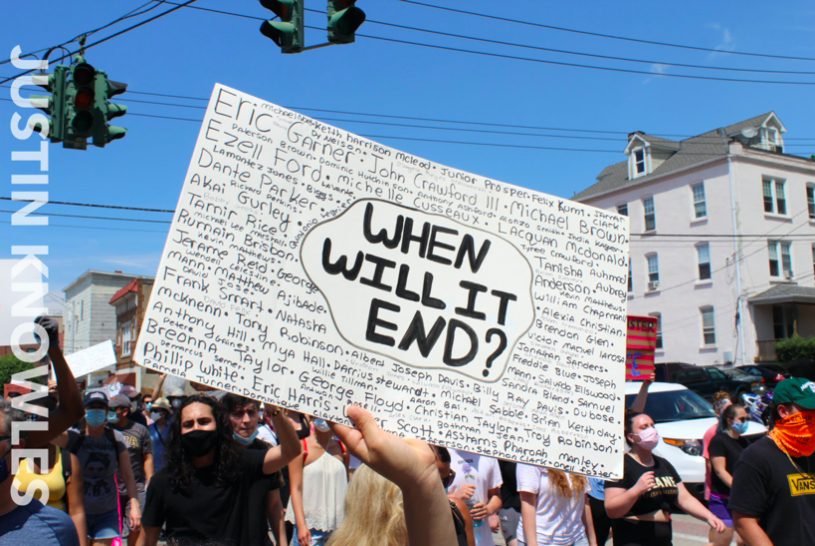Anatomy of a Movement–Black Lives Matter: From Its Creation to the 2020 Protests
September 30, 2020
The acquittal of George Zimmerman, Trayvon Martin’s murderer, not only sent shockwaves throughout the country, but also inspired the creation of the Black Lives Matter movement. The creators of the Black Lives Matter movement took their indignation about the systemic racism ingrained in American society , and channeled it into a reformed fight for racial justice. Social justice organizer and co-founder of the Black Lives Matter movement, Alicia Garza, took to Facebook to express her outrage over Zimmerman’s acquittal with this post:
“Black people I love you. I love us. Our lives matter, Black Lives Matter.”
This compelling post reached her friend and eventual BLM co-founder, Patrisse Cullors, who used the last three words in a hashtag, #BlackLivesMatter. On March 7th, 2013, the BLM hashtag began trending on Twitter, opening a new chapter of change which would reach the entirety of the Black community and capture the attention of social justice leaders. The third and final co-founder, an immigrant’s rights activist named Opal Tometi, became involved in the movement when he offered to help generate various social media platforms, which made the movement accessible and tangible to the masses, connecting activists around the world.
While the movement began in 2013, it only started to gain traction in the summer of 2014, following the murder of Eric Garner by former NYPD officer Daniel Pantaleo, who arrested Garner for allegedly selling individual cigarettes. The arrest escalated and Pantaleo, who placed Garner in a chokehold that would kill him, listened as Garner gasped his last words: “I can’t breathe.” These words were forever imprinted on the minds of countless Americans, as they soon became a rallying cry at BLM protests, and were used to call on Congress and the White House for policial action.
The Obama administration made strides to support the BLM movement by reducing the number of military-grade weapons distributed to local police departments and instituting consent decrees, which allows different court systems to ensure that police departments act with integrity. As the Obama administration pushed these policies through, opposition parties decried Obama’s actions and claimed his administration was anti-police. While BLM activists appreciated Obama’s efforts, they felt that the administration could have done more in helping their fight to dismantle systems that legally protect police officers from prosecution.
With the 2016 election underway, the BLM movement faced frequent backlash, and the emergence of rivaling movements and hashtags such as #AllLivesMatter, #WhiteLivesMatter, and #BlueLivesMatter presented a new obstacle in their fight. In the wake of the 2016 Presidential election and inauguration of Donald J. Trump as 45th President of the United States, the BLM movement lost a lot of news coverage, as criticism from conservative news outlets and opposing organizations abounded.
In 2020, the racially charged killings of Ahmaud Arbery, Breonna Taylor, and George Floyd outraged people across America and around the world, reinvigorating the movement. George Floyd’s murder was recorded by an onlooker, and this footage took the world by storm and pushed the movement to the forefront of mainstream media.
These murders, among others, have inspired worldwide protests, and have immortalized the black lives that were tragically cut short. Although the COVID-19 pandemic has altered the normal rhythms of life, it has not changed the call to activism for black lives. In this time of inordinate complexity, the internet has served as an indispensable tool for activists to unite, form safe spaces, and amplify voices of change. Within the past few months, the support of black lives and the desire to end systemic racism has resulted in countless protests, rallies, and heartfelt demonstrations. The Black Lives Matter movement, evolving from a simple hashtag to an international campaign for civil rights, has called the masses to service in their assiduous fight for justice.
Disclaimer: This article pulls upon information provided on the official Black Lives Matter organization website, Britannica, and the UK’s Channel 4 News.



